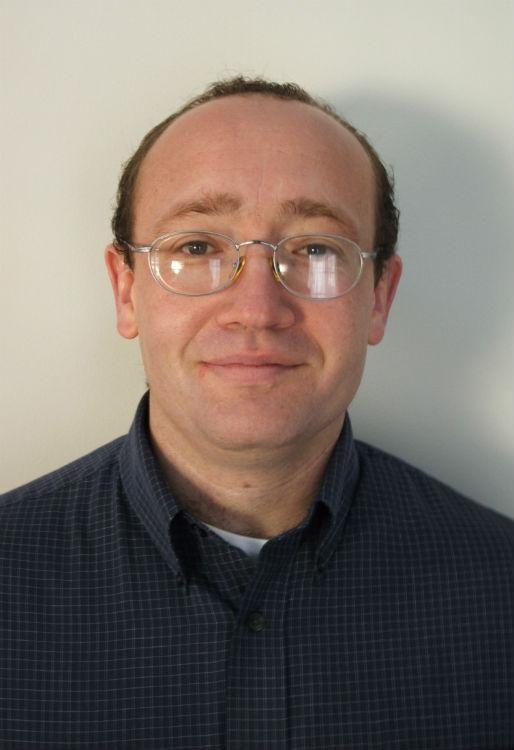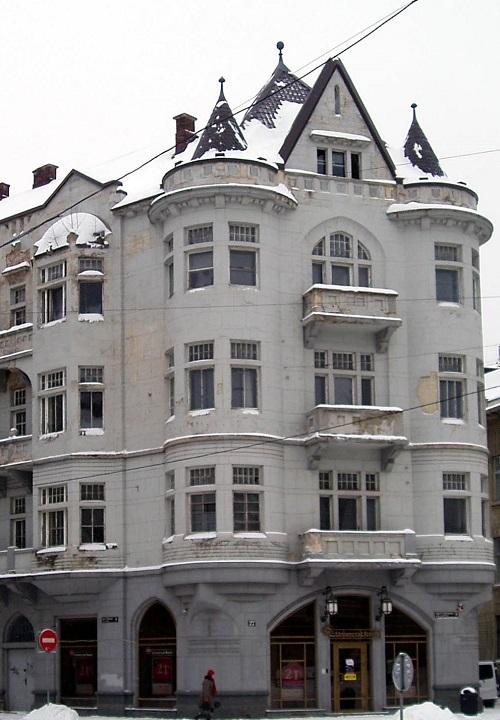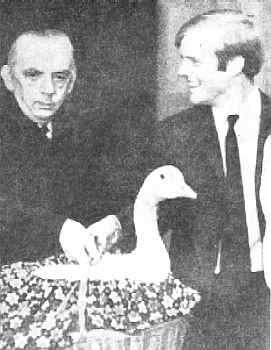Did you know that not one, but two of our Department of Mathematical Sciences faculty members have solved intriguing problems in the famous Scottish Book, considered one of the highest achievements in the field of mathematics?
In fact, one of them, Per Enflo, Ph.D., Emeritus University Professor of Mathematics, even received the prize of a live goose in 1972 from the famous Polish mathematician, Stanislaw Mazur, who initially proposed the problem in 1936!

Now, fifty years later, Dmitry Ryabogin, Ph.D., professor of mathematics, submitted his sole-authored publication "A negative answer to Ulam's problem 19 from the Scottish Book,” to the Annals of Mathematics, Pages 1111-1150, Volume 195 (2022), Issue 3. He didn’t receive a live goose, but he did receive the Kent State University President’s Excellence Award this year. He was nominated for the award by Mandy Munro-Stasiuk, dean of the College of Arts and Sciences at Kent State University.
“Dmitry is a well-rounded academic with a solid publication and grants record and is well-known around the globe for the work that he has done,” Munro-Stasiuk said. “If he was under 40 years of age, this feat would have made him a strong candidate for a Fields Medal, the highest achievement in mathematics, comparable to receiving a Nobel Prize. He’s received a surge of invitations to be a guest speaker at some of the most prestigious academic institutions around the world.”
Ryabogin started at Kent State in 2007 as an associate professor after previously working as an associate professor at Kansas State University. His research is supported by Simons Collaboration Grant for Mathematicians program, the U.S. National Science Foundation and the United States – Israel Binational Science Foundation. He received his Ph.D. in mathematics from the Hebrew University of Jerusalem in 2000. His primary research interests are harmonic analysis as well as integral and convex geometry.
About Ulam’s Problem 19
Known as “the floating body problem”, Ulam’s Problem 19, asks “is a solid of uniform density which will float in water in every position a sphere?” Ryabogin’s abstract states: “Assuming that the density of water is 1, we show that there exists a strictly convex body of revolution of uniform density which is not a Euclidean ball, yet floats in equilibrium in every orientation. We prove an analogous result in all dimensions.”
When asked why he was interested in this problem, Ryabogin said several of his colleagues told him about it, but he could not come up with anything related to it and forgot about it.
“I did not mean to work on it at all,” Ryagobin said. “I was working on different problems and just stumbled upon it again. Then, I started working on it and I managed to solve the particular case.”
“All math problems are very useful because you never know how they are going to come up in the real life,” Ryagobin said. “The Chinese residue theorem was a fun thing for 2000 years and then people noticed that it could be used for cryptography. Now everyone uses it. Ulam's problem 19 might be applicable to medical tomography or some problems in mechanics. I do not see the applications right away, but I am almost sure there are some.”

About the Scottish Book
The Scottish Book, named after the Scottish Café, where it was kept, was literally a notebook used by distinguished mathematicians of the Lwów School of Mathematics in Poland (now Lviv, Ukraine) in the 1930’s and 1940’s. These mathematicians would discuss mathematical research problems in the emerging field of functional analysis and keep notes in the book regarding the problems. Problems that they were unable to solve were listed in the book for others to attempt. This book is widely considered to contain some of the most difficult problems in mathematics. Ultimately 193 problems were listed, the last in 1941 during WWII when most of these mathematicians were either killed during the holocaust, or fled to other countries, including the United States. The book has since been published widely.
About Per Enflo and Mazur’s Goose

Enflo, an emeritus university professor of our Mathematical Sciences department, also solved a Scottish Book problem in 1972, was under 40, and was a finalist for a Fields Medal as a result. He solved Problem 153 in the Scottish Book: "Mazur's goose".
Born in 1944, Enflo has had a remarkable career, not only in mathematics but also in music. He is a renowned concert pianist who has performed and recorded numerous piano concertos and has performed solo and with orchestras across the world.
Enflo is also one of the great problem-solvers in the field of functional analysis. Aside from his work on the invariant subspace problem, Enflo solved two other major problems – the basis problem and the approximation problem – both of which had remained open for more than 40 years.
By solving the approximation problem, Enflo cracked an equivalent puzzle called Mazur’s goose problem. Polish mathematician Stanisław Mazur had in 1936 promised a live goose to anyone who solved his problem – and in 1972 he kept his word, presenting the goose to Enflo.
# # #
Media Contact:
Jim Maxwell, 330-672-8028, JMAXWEL2@kent.edu

